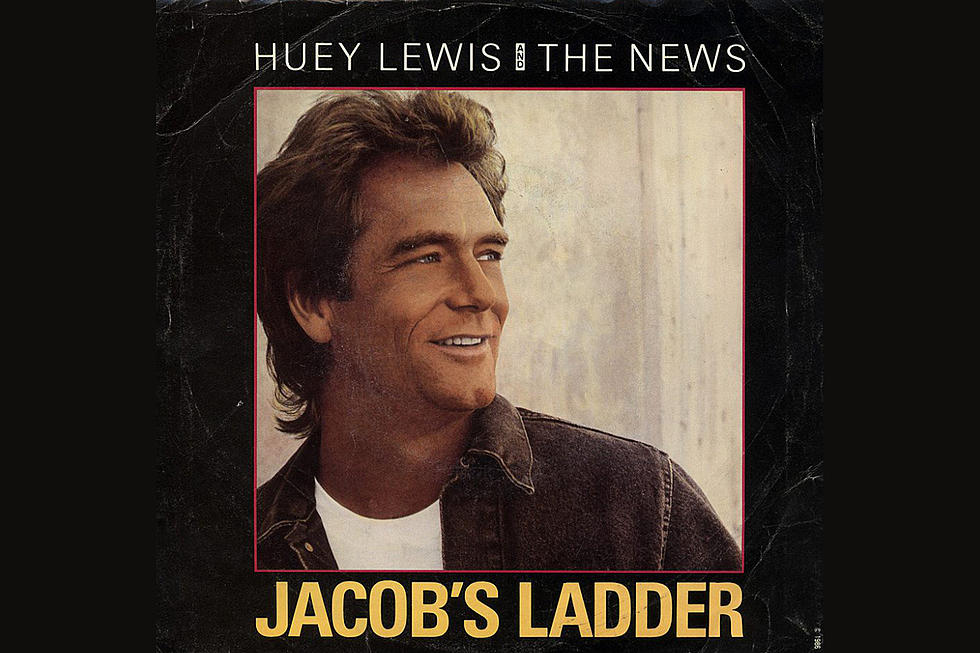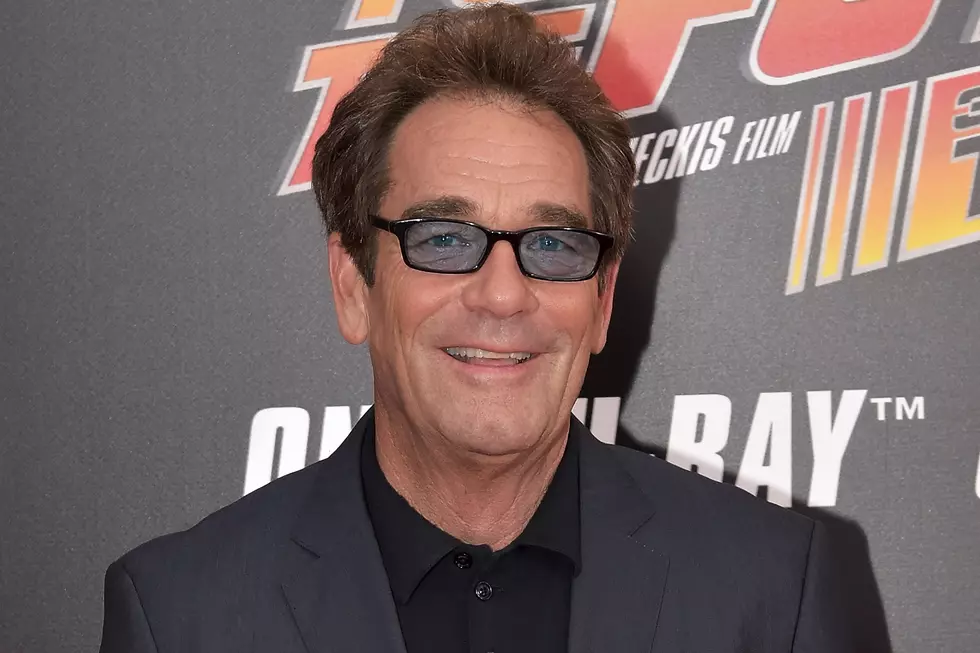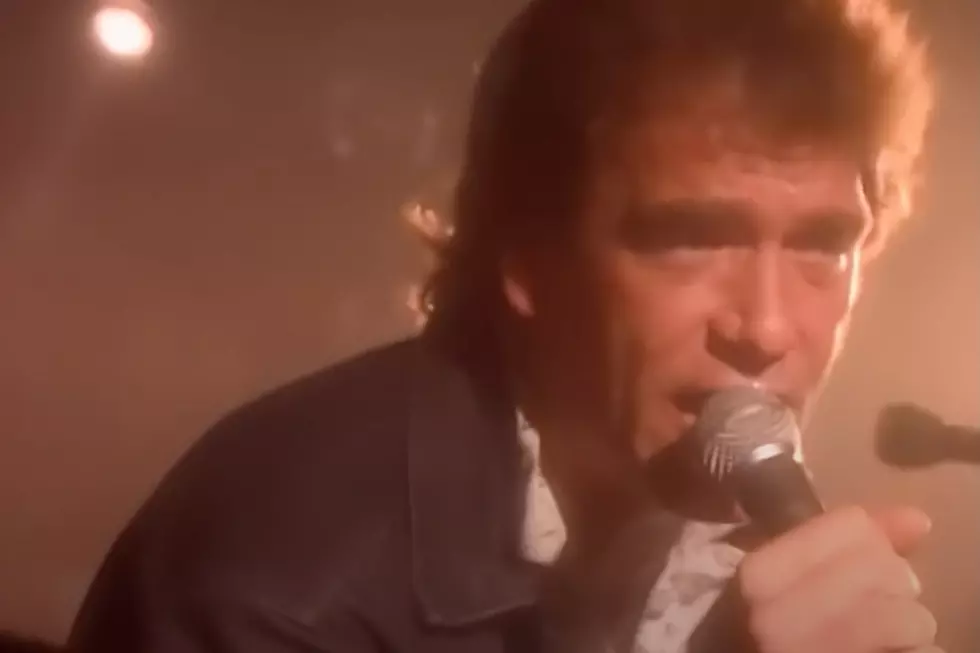
40 Years Ago: How Huey Lewis Found Success With ‘Picture This’
The first three albums from Huey Lewis and the News play out like a crash course in the music business.
They gained crucial knowledge at each stage, with Picture This serving as an important musical proving ground. This sophomore release found them honing skills that paved the way for future successes.
It could have been over before it started, as Lewis confided in a 2014 interview. Their self-titled 1980 debut came and went without making much of an impression. Lewis seems to take ownership for the failure.
“Bill Schnee produced it and it died. But I really bullied Schnee – it was really my fault to be honest,” Lewis said back then. “I thought if we ran in there and resisted the [traditional] recording process and [worked] fast with everything, that we’d have a live-sounding record. Of course, that’s not the case.”
Picture This was a different story, thankfully with a happier ending. Lewis spoke to UCR via Zoom to reflect on the experience of creating the record, which arrived on Jan. 29, 1982, and how the group moved past that initial stumble.
The way nothing happened with that first album would spell doomsday for a lot of artists. But you guys had a second shot. How did you all work to reset collectively?
You know, the second album, you needed a hit in our world. If you think back, it was 1981, so there was no internet, there was no jam band. FM radio started in the ‘60s as “play anything you want,” with Big Daddy, Tom Donahue and KMPX-FM and all of that. By the late ‘70s, it had become completely programmed. CHR, Contemporary Hit Radio, or Top 40, if you will, was the operative format. So there was only one avenue to success for a band to [continue to] make records and that was to have a hit single. We figured that out by the second record and that was our job.
We auditioned a bunch of producers first. But by this point, we had made a record with Bill Schnee. I had worked with Mutt Lange extensively in England, and so we kind of knew how to make records. We convinced our manager [Bob Brown] that we could produce ourselves. He convinced our record company, which nobody did that in those days. You know, you didn’t self-produce. But he convinced [them] that we could do it, mostly because they were 6,000 miles away in England and it was Chrysalis Records and they were a small label.
That was our job with Picture This. We hired an engineer, Jim Gaines. We had auditioned a bunch of people, and we hired Jim because he was from Memphis and he’d worked with Steve Cropper and Stax and all of that stuff. His attitude was just wonderful. The theory was to write the best eight songs that we could, and then find the two best outside songs we could – because frankly, we needed a hit record. We did the whole record and then I called Mutt Lange up and asked him if he had any songs. He sent “We Both Believe in Love,” and I rewrote it a little bit and that was our first hit, "Do You Believe in Love."
Watch the Video for 'Do You Believe in Love' by Huey Lewis and the News
How much did you guys have written as far as the songs?
Well, in those days, we were quite prolific. We were writing quite a lot. We threw away a bunch, you know, in those days. It’s funny how the first three records, it’s so easy to write and then it just gets harder and harder and harder. We worked at Studio 89. We called it our little rehearsal space. We had a four track that we would record our demos on. Chris [Hayes], Johnny [Colla] and I would write most of the stuff. We’d demo it up right there on our four track and then we’d just work the tune up. Thinking back now, it’s amazing how prolific we were early. Because it’s not easy to write songs. [Laughs.] We had lots of ideas. The muse was very present for us.
The story is out there that you all were close to wrapping up the sessions for the album and there’s this feeling that there wasn’t a viable single yet, which is how “Do You Believe in Love” came into the picture. Were there other songs which made you feel like you were on the right track?
Yeah, I mean, they were all kind of on the right track. “Workin’ for a Livin’” was a great song. If it had been the second single from Picture This, it would have been a big hit. I honestly believe that. What happened was that the label got so enamored with us. We were a good band and now we had “Do You Believe in Love,” which [charted] Top 10. They said, “Great, let’s really show the substance of this band.” The second single was “Hope You Love Me Like You Say You Do,” which is a slow R&B ballad – and that’s kind of crazy, you know? It wasn’t a hit, frankly. It didn’t crack the Top 20, so the third song was “Workin’ for a Livin’” It was released as a single and it didn’t do what it should have done. But it’s grown to become one of our biggest songs.
Knowing your presence on Phil Lynott’s musical timeline, what was it that put “Giving It All Up for Love” in your sights for this album?
He cut it and called it “Tattoo.” It was mostly in a minor key. I had this other vision for the song when I did his sessions. I said, “Phil, you need to do it like this.” He said, “No, no, you do it.” So I said, “Okay, I will, darn it!” That was one of the first things we worked up as a band. The instrumental break is this minor thing that goes on: Phil made a real meal of that part of the song. I accent the other part of the song. So I just sort of zigged when he zagged. I had a different vision for it and you know, it was one of our best songs to perform, for several years. It was the first or second song of the set, and it worked great for us right there. People loved it and it was always fun to play.
“Workin’ for a Livin,’” which you mentioned, became a signature song for the band. How did that one emerge?
That was Chris and I. I remember I had the idea for the song way back when I was delivering yogurt. I had a Natural Foods Express Company as I was trying to get my band together. I was delivering [the yogurt] to Natural Foods stores. That was my vision of it. I’m driving and I thought, “Workin’ for a Livin.’” I wrote the whole thing in one sitting. I called Chris up and we pounded it out at rehearsal. You know, it’s funny, it was one of those songs that took no time at all to write, and it evolved – because it wasn’t that great to begin with. It found its own tempo. [It’s] a pretty simple song and sometimes the simplest songs are the hardest ones to get right, because there’s not a lot of chords. It’s all about the feel, and the tempo can be super important. Two clicks can make a huge difference. [But] “Workin’ for a Livin’” found its own tempo to where as a band, it was one of our mainstays in the live show. We can play it and we all know the exact tempo of it. It becomes its own thing. It was really interesting.
Working on a song like that, did you have enough road experience to feel like, “Okay, this is going to be a really good live song?”
Yeah, I mean, we would always try to get them into the set. If you can play ‘em live before you record, it’s such a great experience for a song. You have this idea for this song and you’ve got it. Working it up, the idea is to not lose the idea. You know, make sure you keep your hands around it. Now, when you get it, you’ve got to go play it live. When you play it live, the interesting part is that it’s not about the reaction to the song. It’s about how you feel singing the song to these people. Because now, if a certain part is going on a little too long ... you can immediately tell what’s working and what isn’t working by singing it. It has nothing to do with the audience necessarily, it has everything to do with you selling the song to the audience.
Watch the Video for ‘Workin for a Livin’’ by Huey Lewis and the News
I know you reworked the song that became “Do You Believe in Love” a little bit after you got it from Mutt Lange. What did you have to do to it?
First of all, this was our second record. We were producing ourselves and we weren’t all of the way there yet. I think we finally got [there] with Sports. With Sports, we really figured it out. But with Picture This, we were still finding our way. “Do You Believe in Love,” we cut it without a machine and without any clicks. We just cut it organically and it was fine – except that the second verse actually slows down just this much.
And wouldn’t you know, Mutt Lange [heard that]. You know, I was wild and wooly in those days. I said, “Mutt, don’t worry about it. It’s going to be a hit anyway.” Of course, Bob Clearmountain mixed it and he could mix most things and turn them into hits, I think. Fortunately, it was a hit record. We mixed Picture This in three days. We mixed all 10 songs in three days, at the Power Station. Jon Bon Jovi was the janitor at the Power Station! When I came out of the session, he handed me a tape and said, “Hey, would you mind listening to this? I’m looking for somebody to produce us.” [Laughs.]
Did you give that any consideration at the time?
Oh, I was too busy. We were producing our record and had [so much going on], but I liked it. I complimented him on it and said, “It sounds great, but I can’t.” First of all, I’m not really a producer anyway. I mean, I can produce our own stuff, but ... I used to like production a lot when it was five guys in a room, play the song and capture it. Now that it’s machines and it’s this and Pro Tools, you know, that’s not as much fun for me. I don’t enjoy it.
I know you’ve said at the time that you hated the video for “Do You Believe in Love.” Still, it looks like it would have been a fun video to make.
No, no, it was a long day and it was silly, I thought, from the [beginning], but I figured, “Well, maybe this guy knows what he’s doing.” I didn’t know. We shot it all day long and then we went home. A week later, we came back to see the rough cut. We go back to the record company, there’s seven of us and seven of the record company and seven from the video company. The record company wanted to make a professional video, so they hired a real professional advertising guy. He stands up and he goes, “Now, it’s not colorized yet. It’s going to look great when it’s colorized, but here’s the rough cut.” There’s like 20 people in the room, he shuts off the lights, plays the video and my heart sank. It was the worst thing I’d ever seen. [Laughs.]
We’re in bed with the girl: What, seven guys in the bed with the girl? The lead singer, I’m wandering through frame, left to right and singing off to the outsides. This is the weirdest thing ever. I just thought, “Oh, this is terrible.” And of course, as soon as it ended, they put the lights back on, everybody stood up and gave us a standing ovation. I thought to myself, “Well, clearly anybody can do this. There is no right or wrong or talent to any of this stuff. We’re producing our own records, we might as well be doing our own videos.” So because of that video, we insisted on conceiving all of our own videos.
44 Famous Records You Probably Didn't Realize Were Covers
How Huey Lewis Scored Big With ‘Sports’
More From KOOL 101.7










